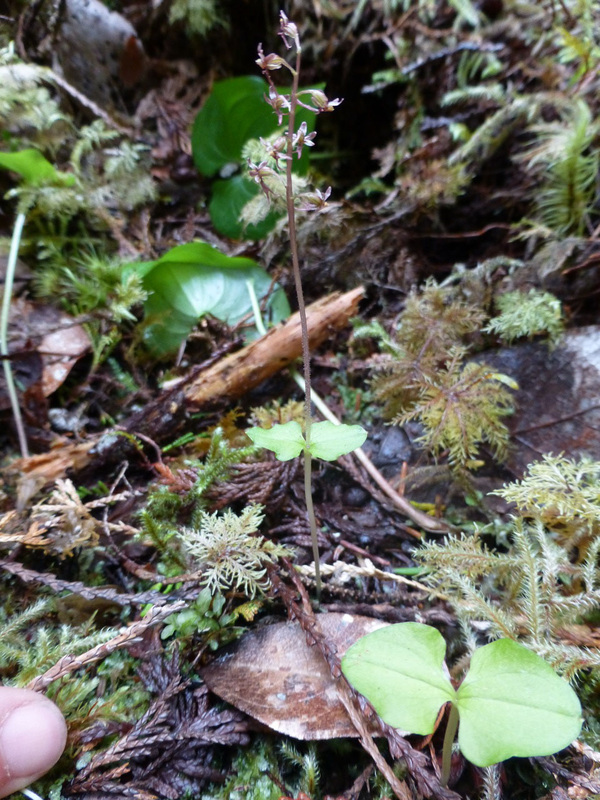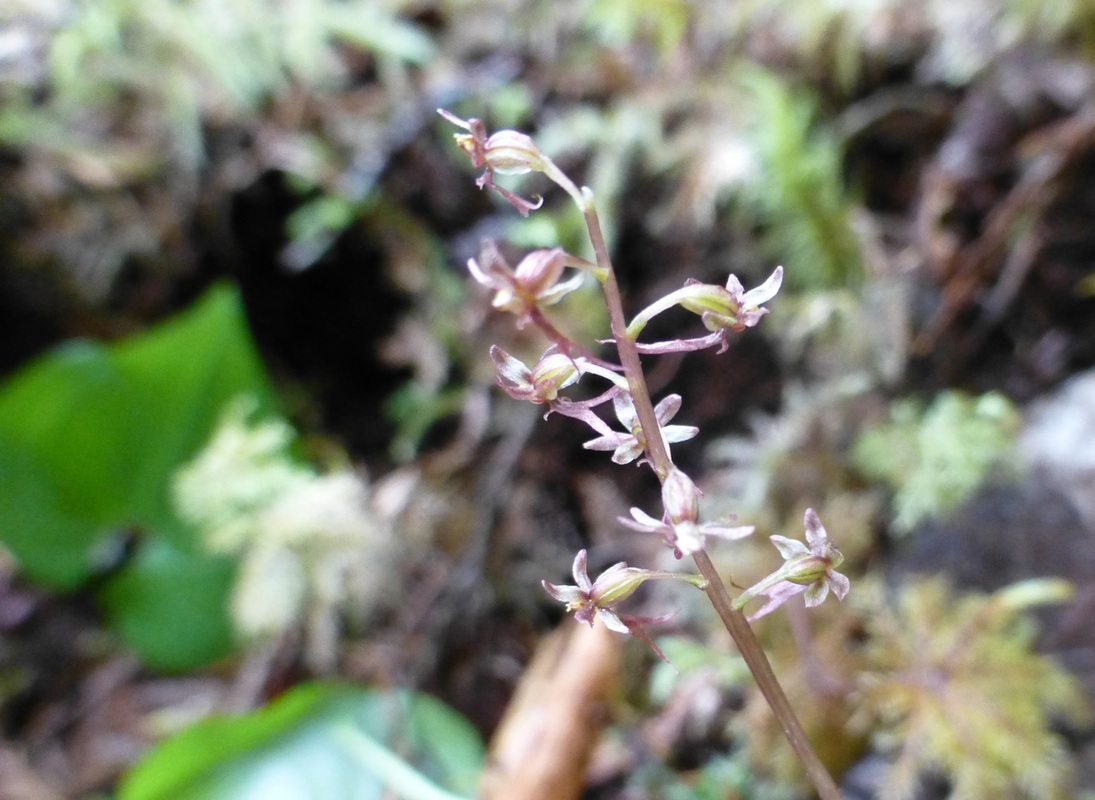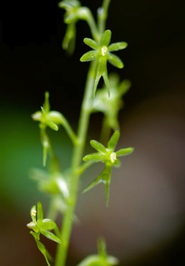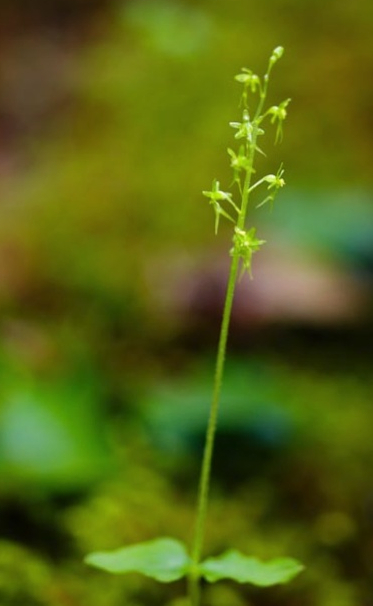Heart-leaved twayblade, heartleaf twayblade • Listera cordata
Identification
Heart-leaved twayblade is a delicate-looking orchid that grows to 20 cm tall from slender creeping rhizomes. A single pair of opposite leaves clasps the stem mid-way along its length; these leaves grow to 4 cm long, are heart-shaped, and are broad with sharply pointed tips. The stem is smooth or somewhat hairy above the leaves. Five to ten flowers grow in an elongated cluster at the tip of the stem. They vary from pale green to purplish-brown or maroon. The flower lip is split into two elongated lobes, with a pair of teeth cutting into the base.
Click here for further details on flower structure, and for some helpful diagrams.
Habitat & Range
These perennial flower grows in moist to wet locations. It can be found in mossy coniferous forests, meadows, bogs, and along streams at middle elevations. It is a circumpolar species, and so is found across much of North America as well as Eurasia. Its west coast range stretches from Alaska to California (see range map).
Similar Species
Northwestern twayblade (Listera caurina) and broad-leaved twayblade (L. convallariodes) are similar species, but can be differentiated using flower structure differences. Both species have more complete flower lips, marked by small notches and teeth as opposed to the split lip of the heart-leaved twayblade's flower.
Intriguing Info
The flowers of this species give off a pungent odor which attracts insects.
Pollination of Listera species involves an explosive expulsion of a pollen-fluid mixture from the flower. The thick fluid glues the pollen to insects within range.
Heart-leaved twayblade is a delicate-looking orchid that grows to 20 cm tall from slender creeping rhizomes. A single pair of opposite leaves clasps the stem mid-way along its length; these leaves grow to 4 cm long, are heart-shaped, and are broad with sharply pointed tips. The stem is smooth or somewhat hairy above the leaves. Five to ten flowers grow in an elongated cluster at the tip of the stem. They vary from pale green to purplish-brown or maroon. The flower lip is split into two elongated lobes, with a pair of teeth cutting into the base.
Click here for further details on flower structure, and for some helpful diagrams.
Habitat & Range
These perennial flower grows in moist to wet locations. It can be found in mossy coniferous forests, meadows, bogs, and along streams at middle elevations. It is a circumpolar species, and so is found across much of North America as well as Eurasia. Its west coast range stretches from Alaska to California (see range map).
Similar Species
Northwestern twayblade (Listera caurina) and broad-leaved twayblade (L. convallariodes) are similar species, but can be differentiated using flower structure differences. Both species have more complete flower lips, marked by small notches and teeth as opposed to the split lip of the heart-leaved twayblade's flower.
Intriguing Info
The flowers of this species give off a pungent odor which attracts insects.
Pollination of Listera species involves an explosive expulsion of a pollen-fluid mixture from the flower. The thick fluid glues the pollen to insects within range.
References
Listera cordata (L.) R. Br. In Klinkenberg, Brian. (Ed.). E-Flora BC: Electronic Atlas of the Plants of British Columbia. Lab for Advanced Spatial Analysis, Department of Geography, University of British Columbia, Vancouver. Accessed 14/02/2014.
Pojar, J. and MacKinnon, A. (1994). Plants of Coastal British Columbia. Vancouver, BC: Lone Pine Publishing. P. 121.
Authors and editors of page
Kelly Fretwell and Brian Starzomski (2014).
Listera cordata (L.) R. Br. In Klinkenberg, Brian. (Ed.). E-Flora BC: Electronic Atlas of the Plants of British Columbia. Lab for Advanced Spatial Analysis, Department of Geography, University of British Columbia, Vancouver. Accessed 14/02/2014.
Pojar, J. and MacKinnon, A. (1994). Plants of Coastal British Columbia. Vancouver, BC: Lone Pine Publishing. P. 121.
Authors and editors of page
Kelly Fretwell and Brian Starzomski (2014).








